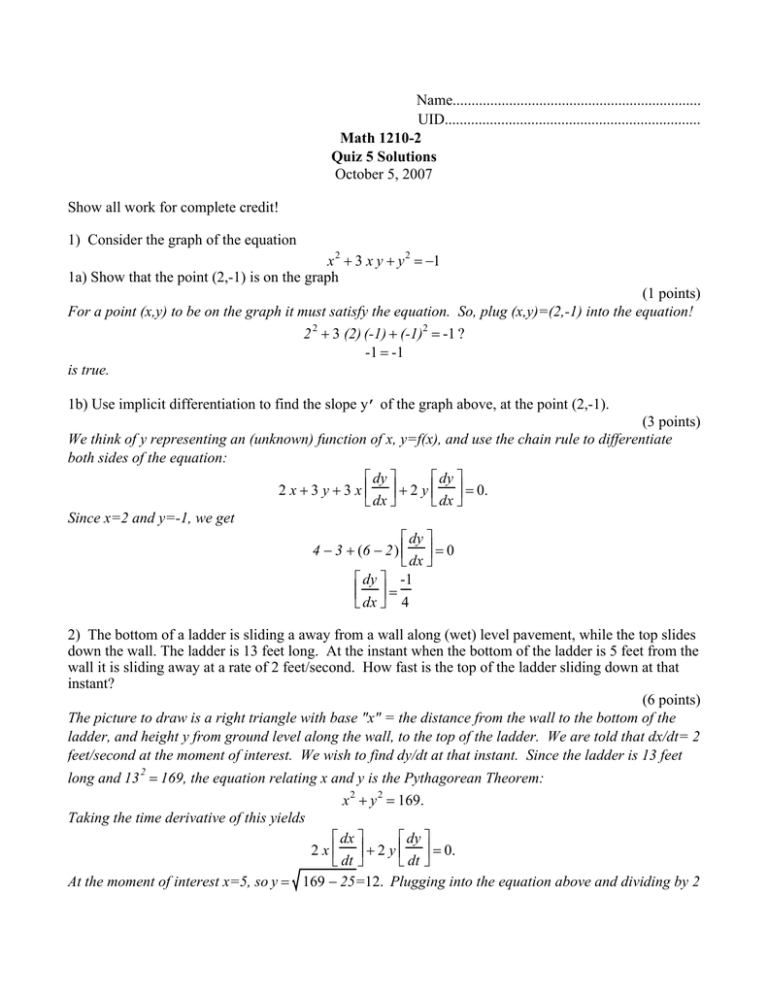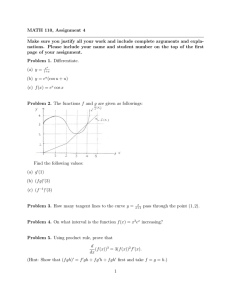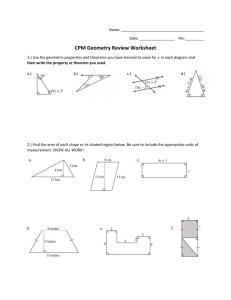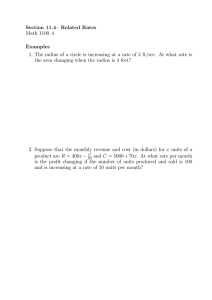Name.................................................................. October 5, 2007 Show all work for complete credit!
advertisement

Name.................................................................. UID.................................................................... Math 1210-2 Quiz 5 Solutions October 5, 2007 Show all work for complete credit! 1) Consider the graph of the equation x 2 + 3 x y + y 2 = −1 1a) Show that the point (2,-1) is on the graph (1 points) For a point (x,y) to be on the graph it must satisfy the equation. So, plug (x,y)=(2,-1) into the equation! 2 2 + 3 (2) (-1) + (-1)2 = -1 ? -1 = -1 is true. 1b) Use implicit differentiation to find the slope y’ of the graph above, at the point (2,-1). (3 points) We think of y representing an (unknown) function of x, y=f(x), and use the chain rule to differentiate both sides of the equation: dy dy 2 x + 3 y + 3 x + 2 y = 0. dx dx Since x=2 and y=-1, we get dy 4 − 3 + (6 − 2 ) = 0 dx dy -1 = dx 4 2) The bottom of a ladder is sliding a away from a wall along (wet) level pavement, while the top slides down the wall. The ladder is 13 feet long. At the instant when the bottom of the ladder is 5 feet from the wall it is sliding away at a rate of 2 feet/second. How fast is the top of the ladder sliding down at that instant? (6 points) The picture to draw is a right triangle with base "x" = the distance from the wall to the bottom of the ladder, and height y from ground level along the wall, to the top of the ladder. We are told that dx/dt= 2 feet/second at the moment of interest. We wish to find dy/dt at that instant. Since the ladder is 13 feet long and 13 2 = 169, the equation relating x and y is the Pythagorean Theorem: x 2 + y 2 = 169. Taking the time derivative of this yields dx dy 2 x + 2 y = 0. dt dt At the moment of interest x=5, so y = 169 − 25=12. Plugging into the equation above and dividing by 2 yields dy 5 (2) + 12 = 0 dt dy -5 = dt 6 5 So, to be precise, the ladder is falling at a rate of feet/second. 6






